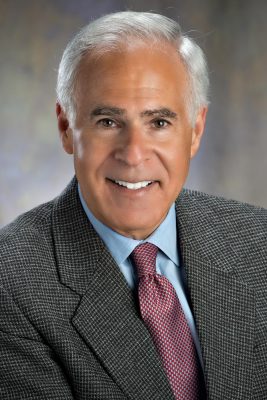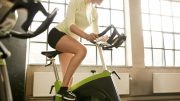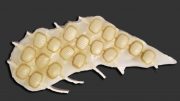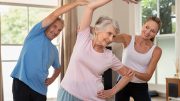
Aerobic exercise is generally safe and beneficial, but extreme endurance exercises like marathons can increase the risk of heart issues, especially for those not used to high-intensity workouts.
Slow, steady increase in exercise intensity is best for heart health.
- For the vast majority of people, the benefits of physical exercise outweigh the risks.
- However, for those who have inadequate training or who have underlying heart problems that may not have been detected, the risks of heart issues from extreme exercises, such as participation in marathons and triathlons, are increased.
For most people, the benefits of aerobic exercise far outweigh the risks, however, extreme endurance exercise – such as participation in marathons and triathlons for people who aren’t accustomed to high-intensity exercise – can raise the risk of sudden cardiac arrest, atrial fibrillation (a heart rhythm disorder) or heart attacks, according to a new Scientific Statement “Exercise-Related Acute Cardiovascular Events and Potential Deleterious Adaptations Following Long-Term Exercise Training: Placing the Risks Into Perspective–An Update from the American Heart Association,” published today (February 26, 2020) in the Association’s premier journal Circulation.
“It is important to start exercising – but go slow, even if you were an athlete in high school.” — Barry A. Franklin Ph.D.
Aerobic exercises are activities in which the large muscles move in a rhythmic manner for a sustained time. They can be done at low intensity or high intensity and include walking, brisk walking, running, bicycling, swimming and many others.
“Exercise is medicine, and there is no question that moderate to vigorous physical activity is beneficial to overall cardiovascular health. However, like medicine, it is possible to underdose and overdose on exercise – more is not always better and can lead to cardiac events, particularly when performed by inactive, unfit, individuals with known or undiagnosed heart disease,” said Barry A. Franklin, Ph.D., chair of the writing committee for the new Scientific Statement, director of preventive cardiology and cardiac rehabilitation at Beaumont Health in Royal Oak, Michigan, professor of internal medicine at Oakland University William Beaumont School of Medicine in Rochester, Michigan.
“More people are running marathons, participating in triathlons, and doing high-intensity interval training. The purpose of this statement is to put the benefits and risks of these vigorous exercise programs in perspective,” said Franklin.

Barry A. Franklin Ph.D. Director of preventive cardiology and cardiac rehabilitation at Beaumont Health in Royal Oak, Michigan, professor of internal medicine at Oakland University William Beaumont School of Medicine in Rochester, Michigan. Credit: Photoproduction Dept, Beaumont Health, Royal Oak, Michigan
After reviewing more than 300 scientific studies, the writing committee found that, for the vast majority of people, the benefits of exercise and improving physical fitness outweigh the risks. Physically active people, such as regular walkers, have up to a 50% lower risk of heart attack and sudden cardiac death. However, the committee also identified potential risks with intense exercise training.
The writing group also reviewed a small study that concluded the risk of sudden cardiac death or heart attack is low among people participating in high-intensity exercises such as marathons and triathlons. However, over time, the risk of heart attack or sudden cardiac death among male marathon participants has risen, suggesting that these events are attracting higher-risk participants (those who may have an underlying or undiagnosed cardiovascular condition such as heart rhythm abnormalities or a prior heart attack). For women, who comprised only 15% of the study population, the occurrence of sudden cardiac death was 3.5-fold less than in men.
Among participants in triathlons, almost 40% of cardiac events occurred in first-time participants, indicating that inadequate training or underlying heart problems may be involved. The writing group also found that:
- Half of the cardiac events occur in the last mile of a marathon or half-marathon, so maintaining a steady pace rather than sprinting is advised;
- The risk of cardiac events is greater at high altitudes, but can be decreased by spending at least one day acclimating to the elevation prior to strenuous activity; and
- The risk of atrial fibrillation (AFib), a common heart arrhythmia that raises the risk of stroke, is beneficially reduced with moderate exercise volumes but is highest in people who are sedentary and almost as high in people who are engaged in very high volumes of exercise training, that is, high-intensity training (such as running 60-80 miles 100-130 kilometers a week).
For people who want to become more active, the Association suggests that most people can start a light program of exercise and build up slowly to a moderate to vigorous exercise regimen without seeing a physician first, unless they have physical symptoms such as chest pain, chest pressure or severe shortness of breath while exercising. “It is important to start exercising – but go slow, even if you were an athlete in high school,” said Franklin.
In addition, people with known heart disease (such as a previous heart attack, bypass surgery or angioplasty) should get their doctor’s approval prior to starting an exercise program.
For currently inactive/sedentary people, the Association also suggests checking with your doctor before engaging in any strenuous activities such as shoveling snow or racquet sports, which create rapid increases in heart rate and blood pressure and greatly increase the strain on the heart.
To implement a healthy physical activity program:
- Warm up before exercise by doing the planned activity – such as walking – at a slower pace to let your heart rate rise gradually;
- Walk on a level surface for 6-8 weeks, progressing to walking up hills, jogging, or taking part in more vigorous activities as long as no symptoms occur such as shortness of breath, lightheadedness, chest pain, or chest pressure;
- Increase the amount of time spent on exercise incrementally from five to ten minutes at the beginning and build up slowly to the desired time;
- Lower the intensity of your exercise when environmental conditions place a greater strain on the heart, such as high humidity or high altitude to which you are not accustomed;
- Cool down after exercise by walking at a slow pace to let your heart rate return to normal; and
- Stop and seek medical evaluation if you experience any heart-related symptoms such as lightheadedness, shortness of breath, or chest pain or pressure.
Reference: “Exercise-Related Acute Cardiovascular Events and Potential Deleterious Adaptations Following Long-Term Exercise Training: Placing the Risks Into Perspective–An Update” by Barry A. Franklin, Ph.D., FAHA, Chair; Paul D. Thompson, MD, FAHA, Vice-Chair; Salah S. Al-Zaiti, RN, NP, Ph.D., FAHA; Christine M. Albert, MD, MPH; Marie-France Hivert, MD, MMSC; Benjamin D. Levine, MD; Felipe Lobelo, MD, Ph.D., FAHA; Kushal Madan, Ph.D., FAHA; Anjail Z. Sharrief, MD, MPH and Thijs M.H. Eijsvogels, Ph.D., 26 February 2020, Circulation.
DOI: 10.1161/CIR.0000000000000749
Co-authors are Paul D. Thompson, M.D., vice-chair; Salah S. Al-Zaiti, R.N., N.P., Ph.D.; Christine M. Albert, M.D., M.P.H.; Marie-France Hivert, M.D., M.M.S.C.; Benjamin D. Levine, M.D.; Felipe Lobelo, M.D., Ph.D.; Kushal Madan, Ph.D.; Anjail Z. Sharrief, M.D., M.P.H.; Thijs M.H. Eijsvogels, Ph.D. Author disclosures are in the manuscript.









You don’t have to plow in the gym every day for results. You can always just choose the activity you like. This can be yoga, dance and Pilates, here https://smart.reviews/ you can read reviews of various sports complexes and choose what you like best
I am very sorry for people who, due to health problems, cannot live a full life. I am one of them, I went for a long time to go in for sports without any special restrictions, since I really love sports. The clinic helped me with this startstemcells clinic Any physical activity in the presence of such diseases should be agreed with the doctor. Well-planned physical activity along with proper nutrition is an effective way to stop the development of cardiovascular disease. The main thing is not to start working on yourself in time – because inaction is much more dangerous.